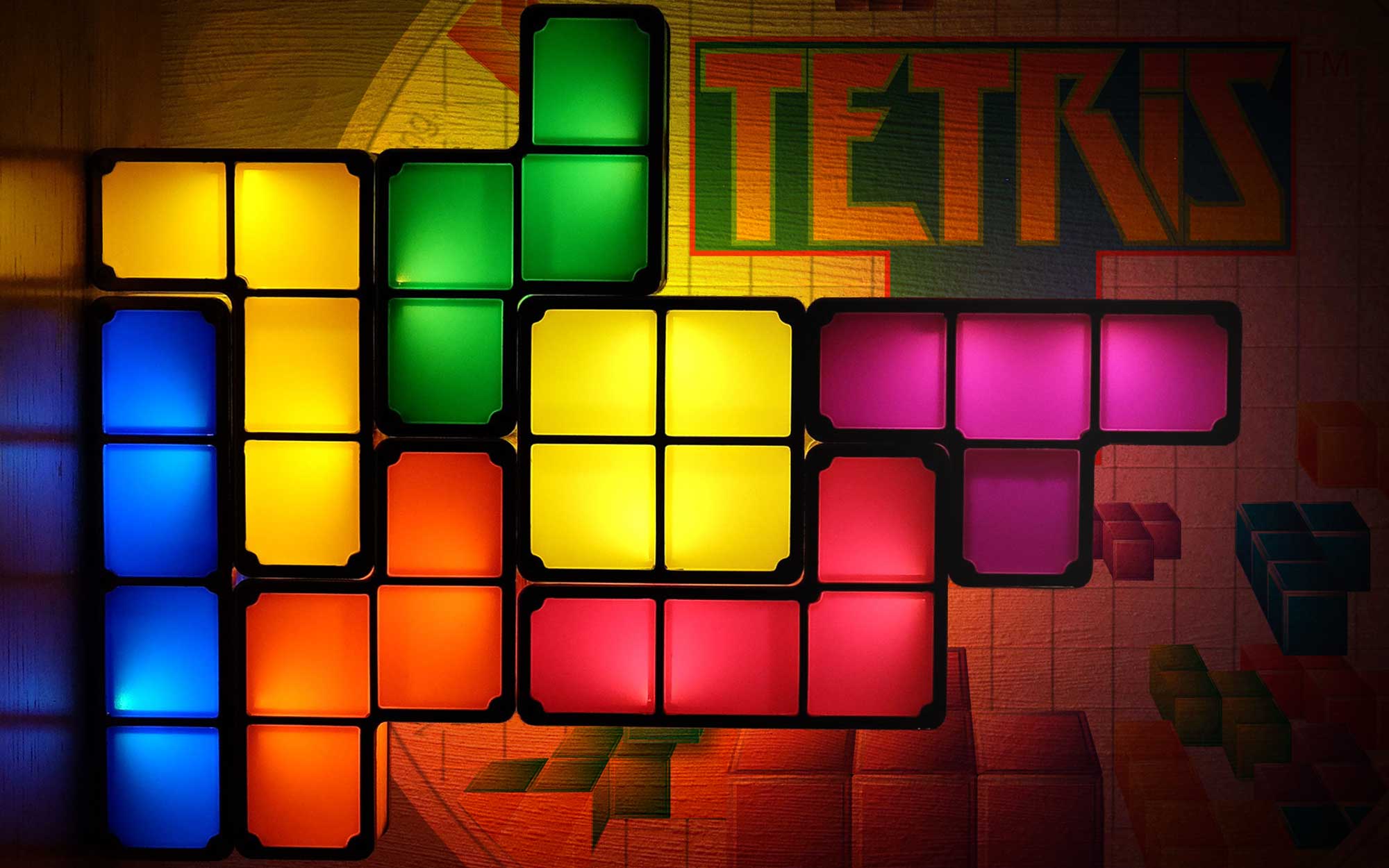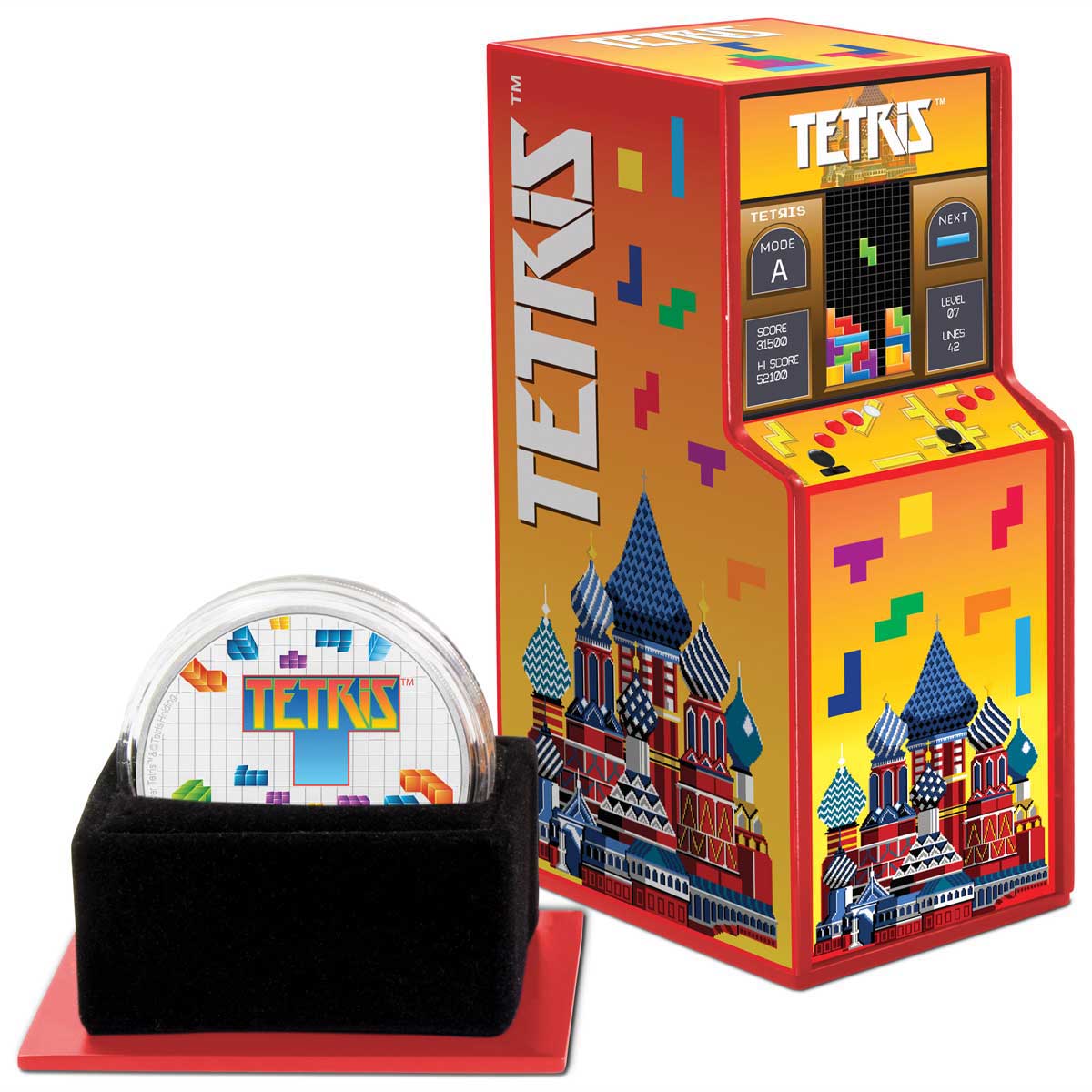Tetris hits the silver coin world. How many tries to get it into the slot in the box?
A nice surprise last year, the Space Invaders 40th anniversary coin was the perfect commemoration of the groundbreaking early cult video-game. Using lenticular imagery to replicate the famous spaceship movement, and packaging in a very cool arcade cabinet style box, it’s no surprise that it sold out at the mint. It wasn’t initially indicated that it would be the first of a new series, but here we are with a welcome second issue nevertheless.
Known more for being the launch title for Nintendo’s mega-hit handheld console, the Gameboy, Tetris was the brainchild of Soviet computer programmer, Alexey Pajitnov. Going on to sell over 170 million copies and still popular to this day, the falling block game is certainly a worthy subject for a commemorative coin as it hits its 35th birthday.
No lenticular moving effect this time, sadly, and while it would have been more difficult to implement for Tetris, we think it would’ve been worth the effort – a kind of series signature. Whatever the case, the coin design is colourful and bang on point. Tetris fans, and we’re sure there are more than enough of the 170 million owners of it to mop up just 3,000 of these coins, will love it, we’re sure. With video-game collecting now a very popular and increasingly valuable business, the release of these coins shows great foresight.
As with Space Invaders, the collectability of Tetris 35th is greatly enhanced by the superb packaging. We have last years issue here and can confirm the quality is top notch. While Tetris certainly lacks the arcade appeal of Space Invaders, it was released in that format, and the Russian themed design looks superb. Available right now, this 1oz coloured proof silver coin should sell for around the $80/€80 mark.
Tetris, the game that made the Gameboy
Tetris is a tile-matching puzzle video game originally designed and programmed by Soviet Russian game designer Alexey Pajitnov. The first playable version was completed on June 6, 1984, while he was working for the Dorodnitsyn Computing Centre of the Academy of Science of the Soviet Union in Moscow. He derived its name from the Greek numerical prefix tetra- (all of the game’s pieces contain four segments) and tennis, Pajitnov’s favourite sport. The name is also used in-game to refer to the play where four lines (the maximum simultaneous clearance number) are cleared at once.
Tetris was the first entertainment software to be exported from the Soviet Union to the United States, where it was published by Spectrum HoloByte for the Commodore 64 and IBM PC. The game is a popular use of tetrominoes, the four-element case of polyominoes, which have been used in popular puzzles since at least 1907. (The name for these figures was given by the mathematician Solomon W. Golomb in 1953.)
The game, or one of its many variants, is available for nearly every video game console and computer operating system, as well as on devices such as graphing calculators, mobile phones, portable media players, PDAs, Network music players, and as an Easter egg on non-media products like oscilloscopes. It has even been played on the sides of various buildings.
While versions of Tetris were sold for a range of 1980s home computer platforms as well as arcades, it was the successful handheld version for the Game Boy, launched in 1989, that established the game as one of the most popular video games ever. Electronic Gaming Monthly’s 100th issue had Tetris in first place as “Greatest Game of All Time”. In 2007, it came in second place in IGN’s “100 Greatest Video Games of All Time”. In January 2010, it was announced that the games in the franchise had sold more than 170 million copies–approximately 70 million physical copies, and over 100 million copies for cell phones–making it the best selling paid-downloaded game of all time. (Source: Wikipedia)
| SPECIFICATION | |
| DENOMINATION | $2 NZD (New Zealand) |
| COMPOSITION | 0.999 silver |
| WEIGHT | 31.1 grams |
| DIMENSIONS | 40.0 mm |
| FINISH | Proof |
| MODIFICATIONS | Colour |
| MINTAGE | 3,000 |
| BOX / COA | Yes / Yes |





Leave A Comment